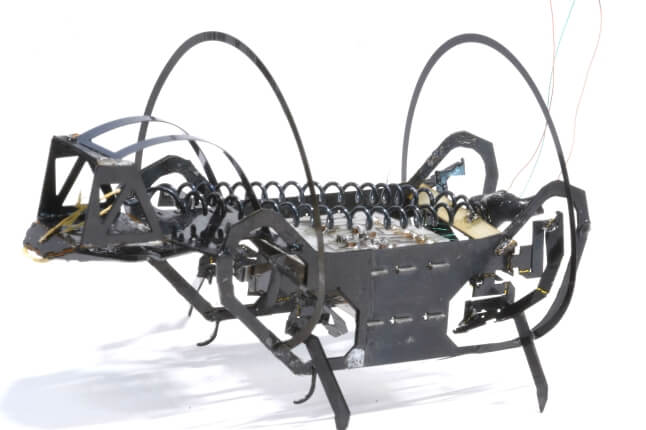News
The Harvard Ambulatory Microrobot — nicknamed HAMR — is a versatile robot that can run at high speeds, jump, climb, turn sharply, carry payloads and fall from great distances without being injured (Image courtesy of the Harvard Microrobotics Lab/Harvard University)
If you’ve ever tried to kill an interloping cockroach, you’ve probably noticed two things: they’re fast and nearly invincible. While those features make roaches terrifying to most people, it’s a source of bioinspiration for roboticists at the Harvard John A. Paulson School of Engineering and Applied Sciences (SEAS).
Led by Robert J. Wood, Charles River Professor of Engineering and Applied Sciences at SEAS, researchers in the Harvard Microrobotics Laboratory have developed a centimeter-scale robot inspired by cockroaches.
The Harvard Ambulatory Microrobot — nicknamed HAMR — is a versatile robot that can run at high speeds, jump, climb, turn sharply, carry payloads and fall from great distances without being injured.
“The HAMR platform evolved from our exploration of millimeter-scale fabrication and actuation strategies,” said Wood, who is also a Core Faculty Member of the Harvard Wyss Institute for Biologically Inspired Engineering. “Our techniques allow us to create robots that don’t sacrifice complexity as the size is reduced and enabled us to create robots that rival some of the capabilities of their biological counterparts. These robots are as valuable for biological studies as they will eventually be for tasks such as search and rescue and infrastructure inspection.”
Topics: Robotics
Cutting-edge science delivered direct to your inbox.
Join the Harvard SEAS mailing list.
Scientist Profiles
Robert J. Wood
Harry Lewis and Marlyn McGrath Professor of Engineering and Applied Sciences
Press Contact
Leah Burrows | 617-496-1351 | lburrows@seas.harvard.edu




